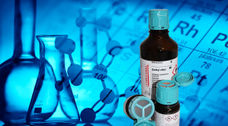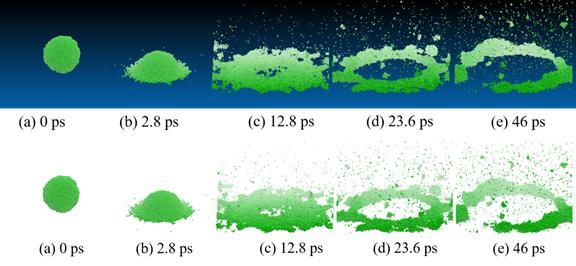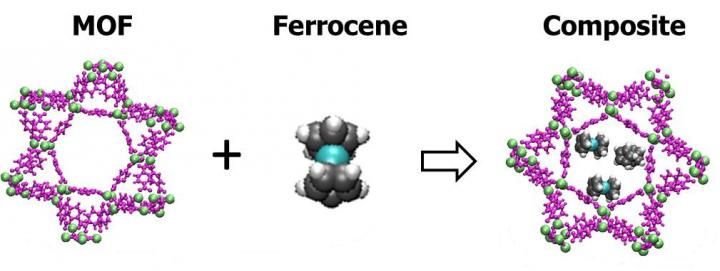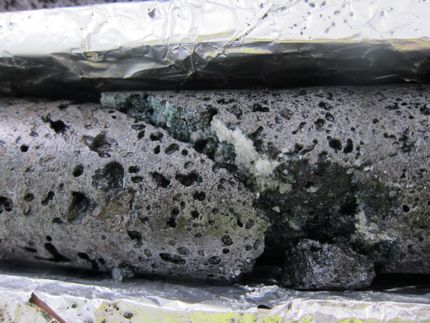Lawrence Livermore scientists discover new materials to capture methane
Scientists at Lawrence Livermore National Laboratory (LLNL) and UC Berkeley and have discovered new materials to capture methane, the second highest concentration greenhouse gas emitted into the atmosphere.
Methane is a substantial driver of global climate change, contributing 30 percent of current net climate warming. Concern over methane is mounting, due to leaks associated with rapidly expanding unconventional oil and gas extraction, and the potential for large-scale release of methane from the Arctic as ice cover continues to melt and decayed material releases methane to the atmosphere. At the same time, methane is a growing source of energy, and aggressive methane mitigation is key to avoiding dangerous levels of global warming.
The research team, made up of Amitesh Maiti, Roger Aines and Josh Stolaroff of LLNL and Berend Smit at UC Berkeley and Lawrence Berkeley National Lab, performed systematic computer simulation studies on the effectiveness of methane capture using two different materials – liquid solvents and nanoporous zeolites (porous materials commonly used as commercial adsorbents).
While the liquid solvents were not effective for methane capture, a handful of zeolites had sufficient methane sorption to be technologically promising. The research appears in the journal Nature Communications.
Unlike carbon dioxide, the largest emitted greenhouse gas, which can be captured both physically and chemically in a variety of solvents and porous solids, methane is completely non-polar and interacts very weekly with most materials.
"Methane capture poses a challenge that can only be addressed through extensive material screening and ingenious molecular-level designs," Maiti said.
Methane is far more potent as a greenhouse gas than CO2. Researchers have found that the release of as little as 1 percent of methane from the Arctic alone could have a warming effect approaching that being produced by all of the CO2 that has been pumped into the atmosphere by human activity since the start of the Industrial Revolution.
Methane is emitted at a wide range of concentrations from a variety of sources, including natural gas systems, livestock, landfills, coal mining, manure management, wastewater treatment, rice cultivation and a few combustion processes.
The team's research focused on two different applications -- concentrating a medium-purity methane stream to a high-purity range (greater than 90 percent), as involved in purifying a low-quality natural gas; and concentrating a dilute stream (about 1 percent or lower) to the medium-purity range (greater than 5 percent), above methane's flammability limit in air.
Through an extensive study, the team found that none of the common solvents (including ionic liquids) appears to possess enough affinity toward methane to be of practical use. However, a systematic screening of around 100,000 zeolite structures uncovered a few nanoporous candidates that appear technologically promising.
Zeolites are unique structures that can be used for many different types of gas separations and storage applications because of their diverse topology from various networks of the framework atoms. In the team's simulations, one specific zeolite, dubbed SBN, captured enough medium source methane to turn it to high purity methane, which in turn could be used to generate efficient electricity.
"We used free-energy profiling and geometric analysis in these candidate zeolites to understand how the distribution and connectivity of pore structures and binding sites can lead to enhanced sorption of methane while being competitive with CO2 sorption at the same time," Maiti said.
Other zeolites, named ZON and FER, were able to concentrate dilute methane streams into moderate concentrations that could be used to treat coal-mine ventilation air.
Most read news
Other news from the department science
These products might interest you

ERBAdry by CARLO ERBA Reagents
Anhydrous solvents from CARLO ERBA Reagents in a clever redesign
ERBAdry series impresses with the latest generation of septa and sealing caps

Thermo Scientific™ Dionex™ ASE™ 150 or 350 Accelerated Solvent Extractor systems by Thermo Fisher Scientific
Accelerated Solvent Extraction (ASE) – Maximize results and reduce errors in food analysis!
More extractions in less time using less solvent

Get the chemical industry in your inbox
By submitting this form you agree that LUMITOS AG will send you the newsletter(s) selected above by email. Your data will not be passed on to third parties. Your data will be stored and processed in accordance with our data protection regulations. LUMITOS may contact you by email for the purpose of advertising or market and opinion surveys. You can revoke your consent at any time without giving reasons to LUMITOS AG, Ernst-Augustin-Str. 2, 12489 Berlin, Germany or by e-mail at revoke@lumitos.com with effect for the future. In addition, each email contains a link to unsubscribe from the corresponding newsletter.
Most read news
More news from our other portals
Last viewed contents
Agilent Technologies Acquires RVM Scientific, Manufacturer of Direct Rapid Heating/Cooling Systems for GC Capillary Columns
Mechanism for radiation damage identified - Scientists examine electronic decay processes with the aid of quantum chemistry
LANXESS improves earnings in fiscal 2014 and drives realignment forward rapidly - Net income improved to EUR 47 million
Josu_Jon_Imaz
Emerson lands flow measurement project in China for one of world's largest pipelines - Pipeline will transport more than $4 billion of gas annually

Understanding breakups

Mix and match MOF
Watching electrons move in real time



























































